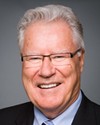That's a good question.
Aboriginal Affairs and Northern Development and Environment Canada have done work to identify this issue in two different ways. One is on what the actual environmental issues are. They really haven't changed since the 2009 Auditor General report that listed the key issues that arise across reserves in Canada. I would say, however, that the major change has been the emergence of the storage tank regulations, which hasn't solved the problem but directly addressed one of those key issues. There is also the forthcoming promulgation of the waste water systems regulations, which again haven't solved the problem but provide part of the solution for one of those key environmental issues.
The other way to look at the problem is to put on my former lawyer's hat and ask what laws, as opposed to what issues, are not addressed. Maybe what I could do is describe what a typical provincial environmental regime covers. It's very extensive.
Most provinces have in place either regulations or a permitting scheme to cover various types of air emissions, ranging from emissions from boilers and other large industrial or commercial facilities to rules around open burning. Typically, a province has in place rules around drinking water quality, discharges to surface water, discharges to sanitary sewers, and the use of septic systems. Most provinces also address solid waste, largely at the municipal level. In addition, most have laws around contaminated sites and hazardous wastes. Some have rules around the application of pesticides.
Also, most municipalities, as creatures of a province, have authorities to put in place land use rules, which may not be directly related to environment but which establish the basis for decision-making, both for commercial development and for environmental protection.
Provinces are primarily responsible for managing extraction and development of natural resources, be it timber, fishing, hunting, extraction of minerals and aggregates, and oil and gas development. In addition, provinces often have in place various rules around regulating transportation of dangerous goods and response to spills, some of which are replicated at the federal level. But not all of these are replicated at the federal level. Therefore, where these are not replicated federally, one can argue that those rules do not apply on federal lands and on reserves. That provides the legal basis for the gap, which in turn gives rise to the various environmental issues I talked about earlier.





